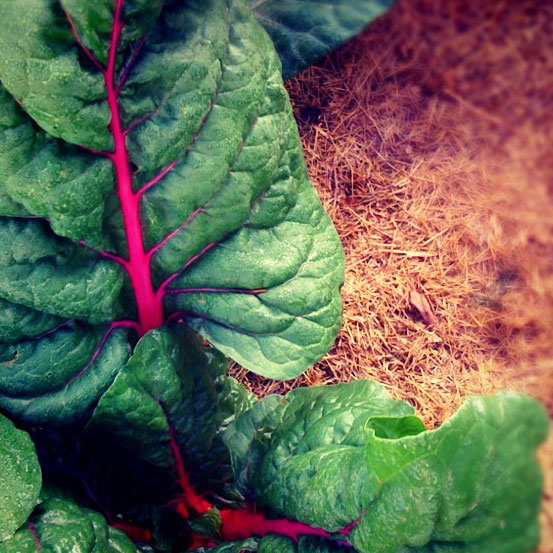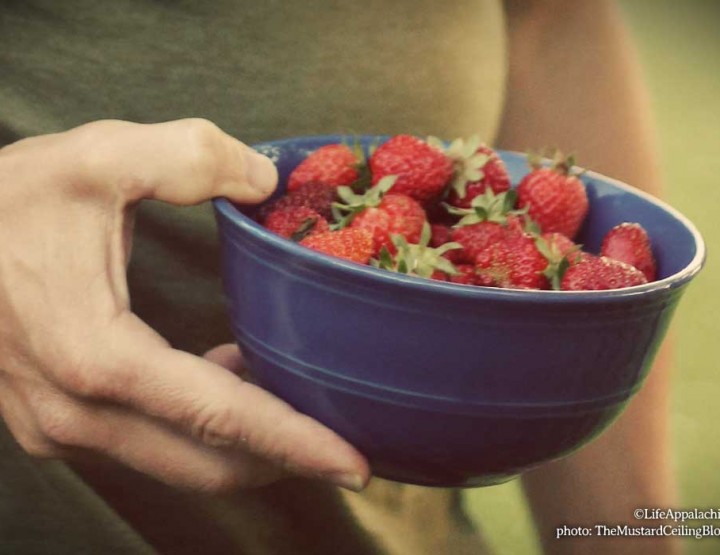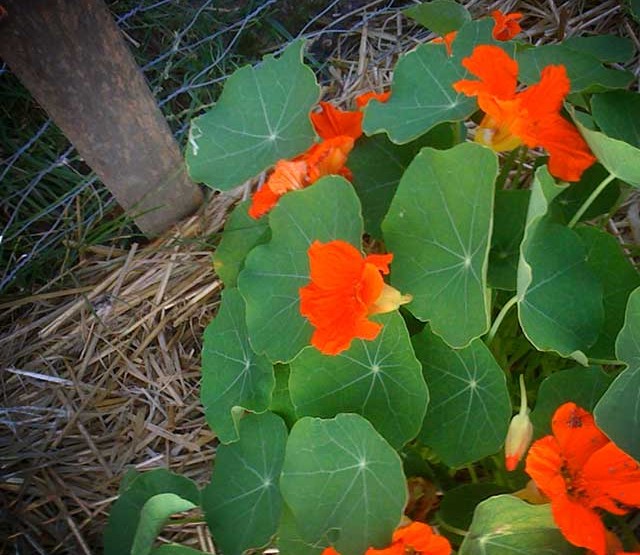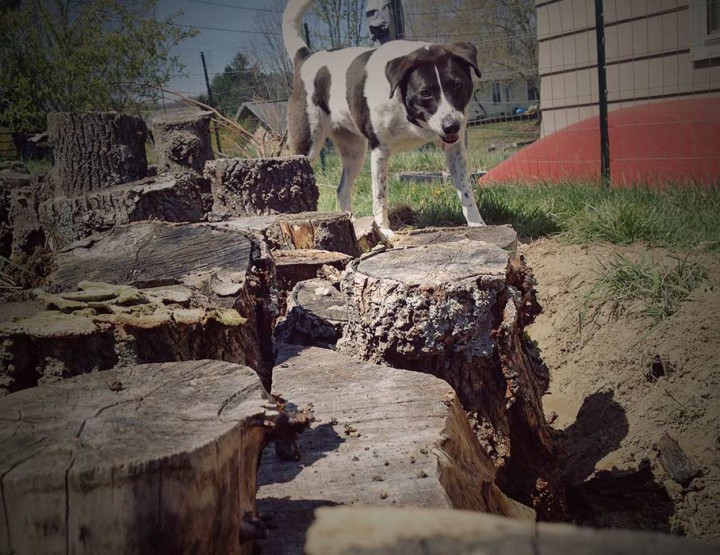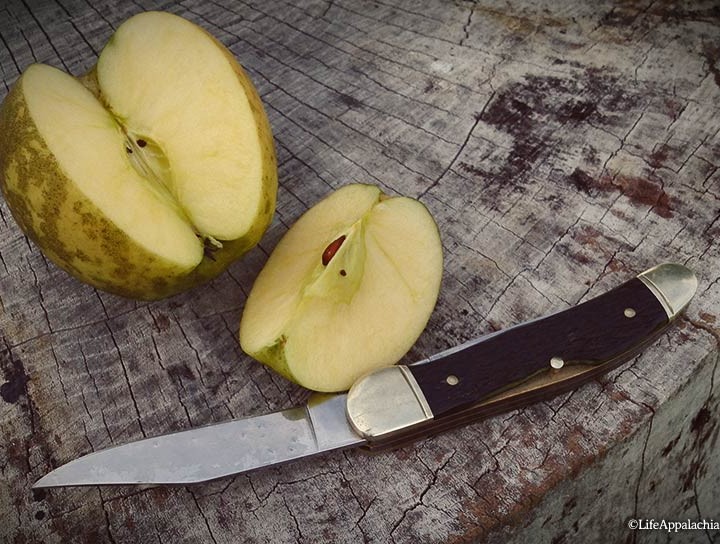Maybe it’s just me, but growing spinach is no joke.I’ve had trouble getting it to germinate and trouble getting it to thrive. This year I had some success with a few plants I grew from seed last fall. It survived the mild winter and leafed out aggressively this spring. I harvested a two-bowl salad and cherished this leafy treat .
Meanwhile in the garden my spinach was promptly bolting into a pollen laden flower stalk. I don’t know if you ever chomped on the leathery leaf of post bolt spinach. I have now and I wouldn’t recommend it.
There has to be a better way.
There is!
Enter swiss chard.
Chard is one of those vegetables that I’d never heard of until I started gardening. The reason was simple; I don’t remember ever seeing it at my grocery store and if I did I had now idea what it was.* I wasn’t growing it so I was eating it and had not have a clue what this leafy plant existed. Last year I grew chard for the first time and became an immediate believer.
Why? Well, it’s easy. Easy to grow, easy to cook, and is great for you. The leafy portions of this vegetable can be used as a substitute for spinach and the stalks make for an interesting earthy ingredient for soups or stir fries. Beyond it’s great taste chard is a powerhouse of vitamins. It contains the antioxidant vitamin C plus Vitamin K to battle Alzheimer’s disease while strengthening bones. It’s also rich in minerals like iron.
Planting
If you grow chard from seed, which I recommend, plant them about 1/2 inch deep around 3 weeks before you final spring frost. I’ve tried growing Bright Lights Chard from seed and from sets in the same season; the plants grown from seed thrived while the sets sputtered. I’ve heard that chard simply doesn’t like to be transplanted. Instead it prefers to grow where it’s seeds fall.
Speaking of seeds, like beets, the oddly shaped chard seeds you’ll find in your seed packed are in fact small dried fruits. There may be several seeds in each little fruit so be ready to thin out those seedlings when they break earth. Just chose the healthiest seedling of each bunch and pinch the tops of the others. But don’t toss them on your compost pile, instead toss them in your salad!
Growing
Like all leafy greens chard loves nitrogen so plant it in rich soil that has been amended with organic fertilizer with a high nitrogen content or a bed that’s been enriched with fresh compost. If possible plant it in a bed that previously was a home for peas or other nitrogen-fixing legumes. Keep chard well watered when it is young so it’s roots don’t dry out. A thick layer of mulch, like wheat straw, will help retain soil moisture. My chard tends to wilt in the hot summer days, but promptly snaps back in the evening as temperatures cool.
Harvesting
Chard can be harvested throughout the growing season and well continue to provide greens late into the fall. It’s known for being a great winter crop if protected from harsh winter temperatures by a cold frame or hoop house in zone 6.
Never harvest the growing tips of the leafy clumps, this will stunt future growth. Instead harvest 3 to 5 leaves from the outside edges of each chard crown as needed. I’ve found that using a pocket knife to cut the stalks off closely to the main stem keeps the plant producing all season long.
Eating
Chard leaves have a buttery, spinach like texture. Some varieties are very savoyed while others resemble lettuce or giant spinach leaves. To process the leaves rinse them off and place them on a cutting board. Take a sharp knife and run its’ point along the edge of the thick stalk to separate it from the leaf. As mentioned earlier the leaves can replace spinach in most recipes. I’ve found them to also be tasty in stir fries , salads and soups. The stalks carry an interesting earthy or organic flavor that can be a little strong; but it grows on you.
Chard has become a staple in my garden. In fact this year I’ve planted an additional variety, Fordhook Giant. I lost my first young plants to the aggressive slug army that is a result of our mild winter but I’ve replanted and the new seedlings are coming along. Stay tuned for a review of that variety. In the mean time, get out there and plant some chard. You’ll be glad you did!
Want to learn more?
Here’s a great video post by Dani Spies a House Counselor and the creator of CleanAndDelicious.com. She does a great job telling more about the health benefits of swiss chard as well as how to buy, prepare and cook this great green. Don’t miss her chard recipes at the bottom of the page! http://cleananddelicious.com/2010/05/06/chard_101_-_video/

